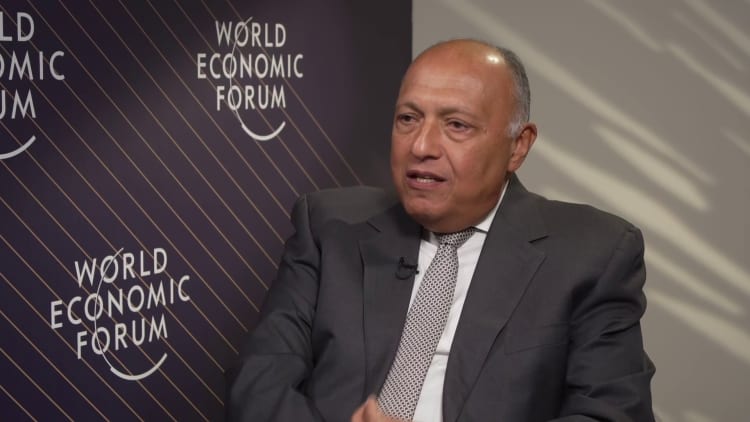When it came to wildfires, 2021 was an increasingly common kind of year in Montana: Flames consumed 747,000 acres, an area nearly the size of Long Island.
About 2,700 of those acres were on Don Harland’s Sheep Creek Ranch, where ever-drier summers have turned lodgepole pines into matchsticks ready to ignite. After the smoke cleared, Mr. Harland found creeks running black with soot and the ground hardening more with every day that passed.
A former timber industry executive, Mr. Harland knew the forest wouldn’t grow back on its own. The land is high and dry, the ground rocky and inhospitable — not like the rainy coastal Northwest, where trees grow thick and fast. Nor did he have the money to carry out a replanting operation, since growing for timber wouldn’t pay for itself; most of the nearby sawmills had shut down long ago anyway. The state government offered a few grants, but nothing on the scale needed to heal the scar.
Then a local forester Mr. Harland knew suggested he get in touch with a new company out of Seattle, called Mast. After visiting to scope out the site, Mast’s staff proposed to replant the whole acreage, free, and even pay Mr. Harland a bit at the end. Mast, in turn, was to earn money from companies that wanted to offset their carbon emissions and would put millions of dollars into planting trees that otherwise wouldn’t exist.
Mr. Harland said he had his doubts about the carbon-selling part of the plan, but he was impressed with Mast’s operations, so he said yes.
Two years later, after seeds had been collected from similar trees on nearby lands, crews of planters came out with bags full of seedlings, rapidly plunking them into the ashen ground. As part of the deal, Mr. Harland signed an agreement to let the trees grow for at least 100 years, so they can keep sucking greenhouse gases out of the air as they mature.
“This is a big risk for them and for me,” Mr. Harland said about Mast. “But there isn’t a lot of options. It doesn’t really matter whether you believe in global warming, or the carbon credits, or even what your politics are — what we’re doing is the right thing.”
Sheep Creek Ranch is one of Mast’s first projects, and the company has three more underway in Oregon and California. Plenty of other companies are enrolling forests in carbon offsets, too. But Mast’s founder, Grant Canary, has much bigger ambitions: His aim is to fix the whole supply chain for reforestation.
It wasn’t always so difficult to plant trees on denuded land. In the decades when timber companies were rapidly clearcutting Western forests, they also had to rapidly replenish the supply, a need that supported a bustling industry of nurseries, seed collection and planting.
But as timber production slowed, the reforestation industry shrank with it. Nurseries closed or fell into disrepair, and skilled workers left the business.
That might not have been such a huge problem if climate change — and poor forest management — hadn’t started to ravage America’s forests. Overcrowded by decades of fire suppression, dried out by drought and weakened by beetle infestations, forests now burn rapidly and so intensely that their natural ability to regenerate is vastly diminished.
That created a pernicious cycle: Forestry agencies had to spend more money fighting megafires and didn’t have enough left over to replant, so the share of burned acres being reforested has steadily declined. When that happens, land is taken over by invasive shrubbery that dries out in the summer, raising the likelihood that the land will burn again.
So there’s clearly a need to resuscitate the forestry supply chain. The problem is translating that need for healthy forests into demand — a market signal, in financial parlance.
Public funding will be part of the solution. Federal and state governments are now dedicating more money than they have in generations to planting projects and the infrastructure that supports them. But the resources committed so far leave a yawning gap, and bridging it requires deciphering a thicket of economic problems along the way.
That’s where Mast comes in. It’s essentially trying to rebuild the timber industry, except with a new end product: carbon removed from the atmosphere, rather than lumber. The market signal from carbon buyers is still faint. But by listening to it, Mast is learning what it takes to scale reforestation for what’s to come.
A gap in the supply chain: Seeds
Across the country, about 70 million acres have burned over the past 10 years, according to the National Interagency Fire Center. Federal agencies have fallen behind in replanting; only 5.5 percent of their destroyed and harvested acres were reforested in 2023, compared with nearly 50 percent in the 1990s. The state governments and thousands of private landowners that own the rest aren’t doing much better.
The United States has a history of belatedly trying to replenish resources it has extracted from the land. In the 1930s, unconstrained cropping and grazing turned much of the Great Plains to dust. Workers on relief rolls were hired to plant 220 million trees from North Dakota to Texas and got results: The new leafy windbreaks, known as a “shelterbelt,” meaningfully increased localized rainfall and increased yields for struggling farmers.
Public nurseries also expanded during that era, with labor from the New Deal’s Civilian Conservation Corps. After World War II, rapid logging to build the nation’s booming cities and suburbs supercharged demand to 100 million seedlings a year.
For 40 years, that business model worked like any agricultural industry. Proceeds from one crop paid for the next replanting and supported a network of suppliers, contractors and scientists who developed new techniques to keep the whole operation moving more efficiently.
In the 1990s, however, ecological concerns prompted a pullback from logging on federal lands in the Pacific Northwest, where old growth had dwindled and habitat loss threatened many species. Timber production shifted to the uniform loblolly pine plantations of Georgia, Alabama and the Carolinas. Those seedlings were of no use in the mountainous and coastal West, with its cedars, firs and Ponderosa pines.
The resulting atrophy in the nation’s seedling supply chain left the forestry community unprepared for what came next.
Matt McCombs, Colorado’s head forester, has seen the reach and severity of wildfires increase year after year, with diminishing ability to revive the charred landscapes they left behind.
When he took the job in 2022, he inherited an antiquated nursery and greenhouses that were falling apart after years of disinvestment.
But the winds in the state legislature — and in Washington, D.C. — were changing. In 2021, Congress passed the bipartisan infrastructure law, which supplied millions more for federal nurseries. Colorado, too, allocated a bit more than $10 million to start rebuilding its nursery.
Mr. McCombs saw the opportunity for an ongoing business model: serving as the replanting engine not just for Colorado, but for the entire intermountain West.
“We’ve got the land, we’ve got the water — we would love to be a core partner and a champion of reforestation as a practice,” said Mr. McCombs, whose smooth patter suggests he has given his pitch to many a state legislator. He has to be good at it, because in the current reforestation paradigm, there is no obvious funder outside the government. Some other states, like New Mexico, are stepping up as well.
“Our conception of the work is not agricultural production of wood fiber,” Mr. McCombs said. “What we’re trying to do is use forest management mechanisms to manage climate change.” In the Rockies, that primarily means preserving water; tree-covered mountains filter runoff and protect the rapidly dwindling snowpack.
Recently burned forests are the most obvious priority for reforestation, since time is of the essence; erosion alone can damage water supplies for years unless trees are able to reestablish themselves.
In the coming years, federal money from the REPLANT Act, the major reforestation measure that was folded into the infrastructure law, is expected to support an additional 1.2 billion trees over the next decade, enough to cover 4.1 million acres.
That’s a meaningful increase, and partnerships with nonprofit groups are helping magnify the investment in hard-hit places like California. But it’s also not going to fix the problem, especially for private landowners. If you, like Don Harland, want to plant trees on your burned-up mountainsides, you typically have to deal with a patchwork of philanthropy and public grants to get it done.
Even if you gather the funding, it’s going to be difficult to find the seedlings and enough workers to plant them. Currently, 94 percent of the 1.4 billion seedlings produced in and imported into the United States come from private nurseries, the vast majority bound for plantations in the Southeast.
Those companies say they could scale up over time to supply the new demand for reforestation that isn’t bound for harvest. But there’s a catch: They don’t want to invest in infrastructure and train a lot of people if this political zeal for tree planting peters out after a couple of years. They want assurance that the market will be there for a while.
A stronger supply chain could also feed a replanting opportunity that goes beyond burned forests. About 148 million acres — an area the size of California and Washington combined — are viable for tree planting, according to an analysis by the Nature Conservancy, and could feasibly store a lot of carbon.
Randy Fournier runs the largest network of nurseries in North America, the British Columbia-based PRT, which sold more than 600 million seedlings last year. He’s been asking the U.S. Department of Agriculture to create an incentive program that would compensate landowners over time to get trees in the ground.
“If you’re the U.S. government, you’re trying to get a certain amount of carbon sequestered,” Mr. Fournier said. “Figure what that number is and put a mechanism in place so that Randy the farmer with fallow, underutilized land can just simply say, ‘Look, I’m going to host a U.S. carbon forest.’ Put a mechanism in place that gives that person a return.”
Of course, that would take more money. At the moment, with a ballooning deficit and other domestic priorities that the Biden administration hasn’t yet funded, Congress does not seem in the mood to hand out more climate-related subsidies. So something has to fill in the gap.
There’s no hack for growing trees
Grant Canary’s first idea for how to fix reforestation was a flop.
Mr. Canary developed the concept while in residence at Techstars, a brand-name start-up incubator. Planting seedlings is hard labor, and recruiting people to do it, especially on remote, rugged mountains, is harder than it was during the Great Depression. He proposed cutting costs by dropping seeds, enclosed in nutrient packs called “pucks,” from heavy-duty drones and garnered a round of buzzy news coverage.
But there was a problem: Falling from 10 meters to the ground doesn’t give a seed as good a chance at survival as hand-planting a baby tree, so you need more of them to cover the same acreage. And with the seed supply having slowed from its heyday, there weren’t enough to waste.
So Mr. Canary decided to go back to basics. In 2021, his venture capital-backed company bought a seed extractory called Silvaseed, which dated to the 1870s and was still the largest producer in the western United States. Then, realizing he needed a bigger funnel to reliably deliver seedlings to those replanting projects, he bought CalForest, the biggest nursery in California.
All of a sudden, with the drone program paused, Mast became something very unfashionable in the tech world: a vertically integrated conglomerate with lots of physical assets, old technology and blue-collar employees. In fact, it looks a little like a traditional timber company — except instead of board feet, its final product is tons of carbon pulled out of the atmosphere.
“There’s a lot of value in the finished good, but there’s not a supply chain today that can deliver a finished product at scale,” Mr. Canary said.
Silvaseed takes up a city block and is the largest employer in the misty hamlet of Roy, Wash. Inside, there’s a lot from the early 20th century that still works well — and a lot that Mast is bringing into the 21st.
A seedling starts as part of a cone, gathered from the 11 Western states that Mast serves. Cone collection, done by local residents who are paid by the bushel, is a catch-as-catch-can kind of business. To keep the population of seed-eaters like squirrels and mice in check, conifers reproduce intermittently, in what’s called a “mast event” (the inspiration for the company’s name).
After collection in the late summer and fall, the cones go into a “kiln,” a giant chute that blows hot air on them for 24 hours, cracking out the seeds. Next comes a series of shakers and screens that separate the seeds from all the woody material that surrounds them. This is bespoke equipment and nearly entirely analog. Mast removed the 1950s belts and rotors, refurbished them and put them back. As far as seed extraction technology goes, it’s still pretty much state of the art.
In one barnlike building, a second floor has been renovated into an airy office space with polished wooden floors and large computer monitors.
New X-ray machines adapted from medical imaging quickly screen sample trays to make sure all of the seeds have embryos and are thus likely to sprout. The seeds are then wrapped in sacks and stored in boxes in a cavernous refrigerator, where they can remain viable for decades. The dormant seeds waft a light citrusy scent.
“The smell of money,” Silvaseed’s previous owners called it.
Information about seeds — where they were collected, who owns the land, if recent fires in the area had created a need for new supply — all goes into proprietary mapping software that allows Mast to calibrate pricing, not unlike a ride-hailing app that brings in more drivers when demand is high.
That information is closely guarded. Mast declined to disclose even a range of prices. Timber companies that produced their own seeds and seedlings suppressed the prices of those inputs, since they made their money on lumber. Reforestation for climate mitigation doesn’t have the luxury of a high-value end product yet — or at least one that sells consistently — so Mast needs to make some margin on the intermediate products as well. That’s especially true as the company develops seed reserves for rarer species that have never been harvested commercially, which is important to avoid creating a fragile monoculture.
Mast is also working to automate seedling formation and increase every sprout’s chance of success. To plant seedlings with bushier roots, the company acquired a machine that pumps out cigarlike tubes of soil wrapped in brown paper and produces far more seedlings a week than a human could manage.
But there are limits to innovation in forestry; there are no simple shortcuts or cost-erasing technologies. In contrast to most of modern agriculture, genetic engineering is rare, and there are few ways to help the trees once they have been planted with fertilizer and pesticides. Climate change is making every step harder, with drought and heat limiting planting seasons and shifting seed zones.
That’s why so much comes down to the price of each puzzle piece — and who pays for it.
Betting on the uncertain market for carbon
Carbon markets have been around for decades. They’re essentially an accounting mechanism: Businesses that produce carbon dioxide can pay for methods, like forests, that remove it. Removing a ton of carbon dioxide creates an “offset,” allowing the business to mitigate its climate impact, whether for public relations reasons or because regulations require it.
Offsets are an obvious, if imperfect, way to fund projects that mitigate climate-warming emissions. But they have been going through a rough patch.
For prospective corporate offset buyers, the marketplace appears opaque and unstable. There are many standards for measuring what equates to a ton of removed carbon, and several high-profile examples of projects that either burned up in wildfires themselves or were outright fraudulent. Some companies — like Delta Air Lines — are being sued for claiming to be “carbon neutral” based on projects that might have happened without the offset.
Prospective carbon credit buyers are nervous about whether they can rely on seller promises, said Zack Parisa, who runs a company called NCX. He pivoted away from developing carbon offsets and now aims to connect landowners with companies interested in a broader range of non-extractive uses, such as space for solar farms.
And of course, offsetting emissions remains generally voluntary for companies operating in the United States, since there’s no federal tax or limit on carbon.
“The risk-reward calculus is upside down right now,” Mr. Parisa said. “These are the questions that people must find resolution on before these markets can scale meaningfully, because it’s still it’s unclear to many buyers whether it’s safe to invest in these assets.”
If those questions can be resolved, analysts expect that the voluntary carbon market could become a trillion-dollar industry. Although it’s been stalled in court, a new rule from the Securities and Exchange Commission that requires large companies to disclose both their emissions and their offset purchases may increase demand for more trustworthy offsets.
Mast thinks it is poised to benefit from those changes. For one thing, it operates solely in post-wildfire, previously forested landscapes. Since chances of natural regeneration in a human lifetime are low, it’s easier to demonstrate that projects are “additional,” or would not happen absent intervention. They guard against future wildfires by planting less densely, which means fires don’t have as much fuel to burn catastrophically. And an independent verification organization monitors the forest to make sure it’s pulling as much carbon down as expected.
While carbon projects come together, Mast can keep some cash coming in the door by supplying seeds to other reforestation efforts, including those funded by new federal money. But their vision for the future is a stable source of private demand, separate from timber and fiber, that outlasts presidential administrations and budget windows. After all, trees think in centuries, not four-year increments.
Don Harland has a view of centuries too, in the legacy of lands that burned just over his property line 80 years ago and still haven’t recovered. For him, carbon markets are the ticket to fixing something that ought to be fixed anyway.
“You take the risk, because what if you didn’t do it?” Mr. Harland said, noting the birds and mammals that migrate across his land to Yellowstone National Park to the north. “The rest of my lifetime I’ll be seeing this burned thing, and I should’ve done something while I had the chance.”
The Headway initiative is funded through grants from the Ford Foundation, the William and Flora Hewlett Foundation and the Stavros Niarchos Foundation (SNF), with Rockefeller Philanthropy Advisors serving as a fiscal sponsor. The Woodcock Foundation is a funder of Headway’s public square. Funders have no control over the selection, focus of stories or the editing process and do not review stories before publication. The Times retains full editorial control of the Headway initiative.
Source link
2024-04-04 09:00:45
www.nytimes.com











